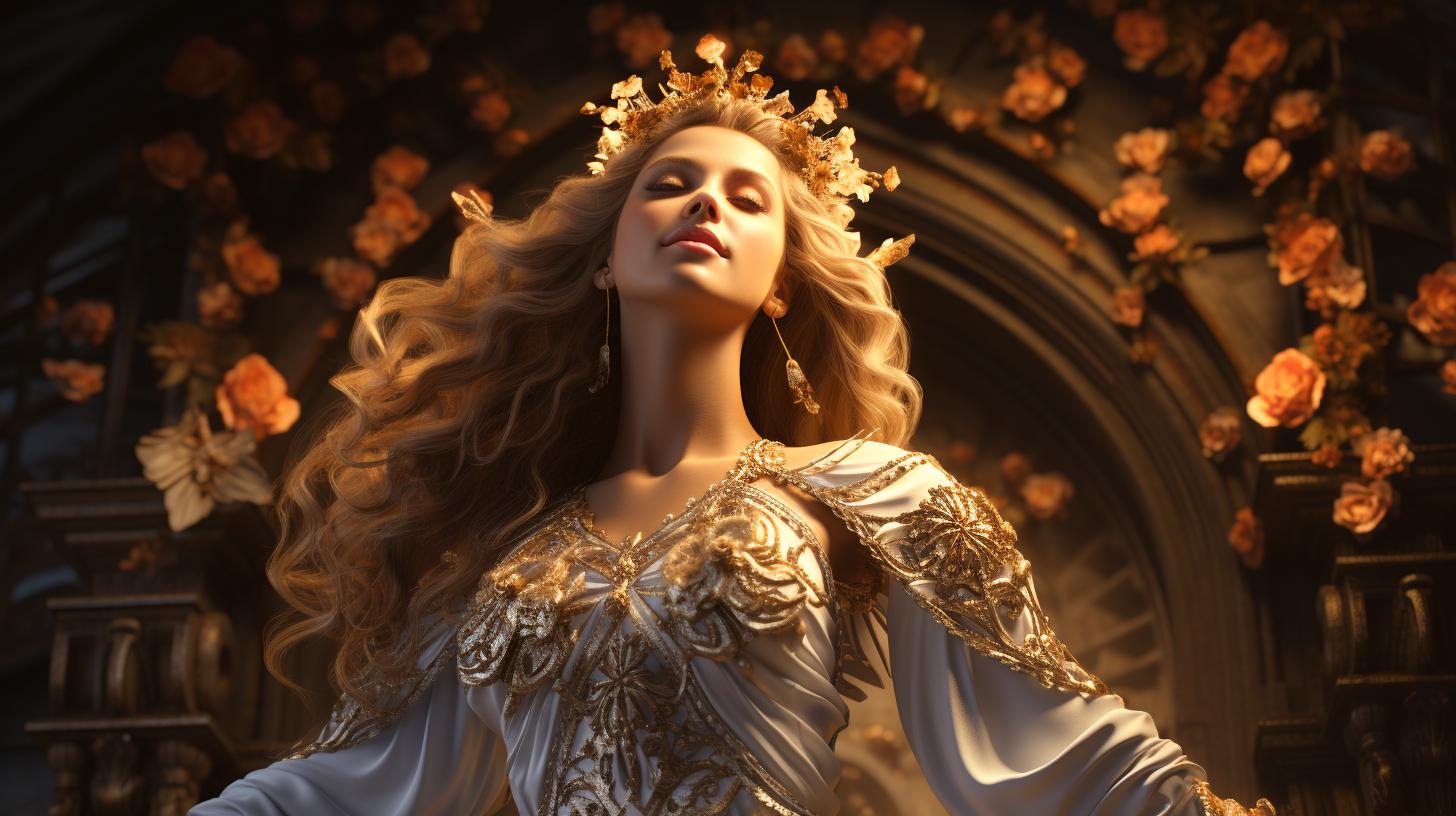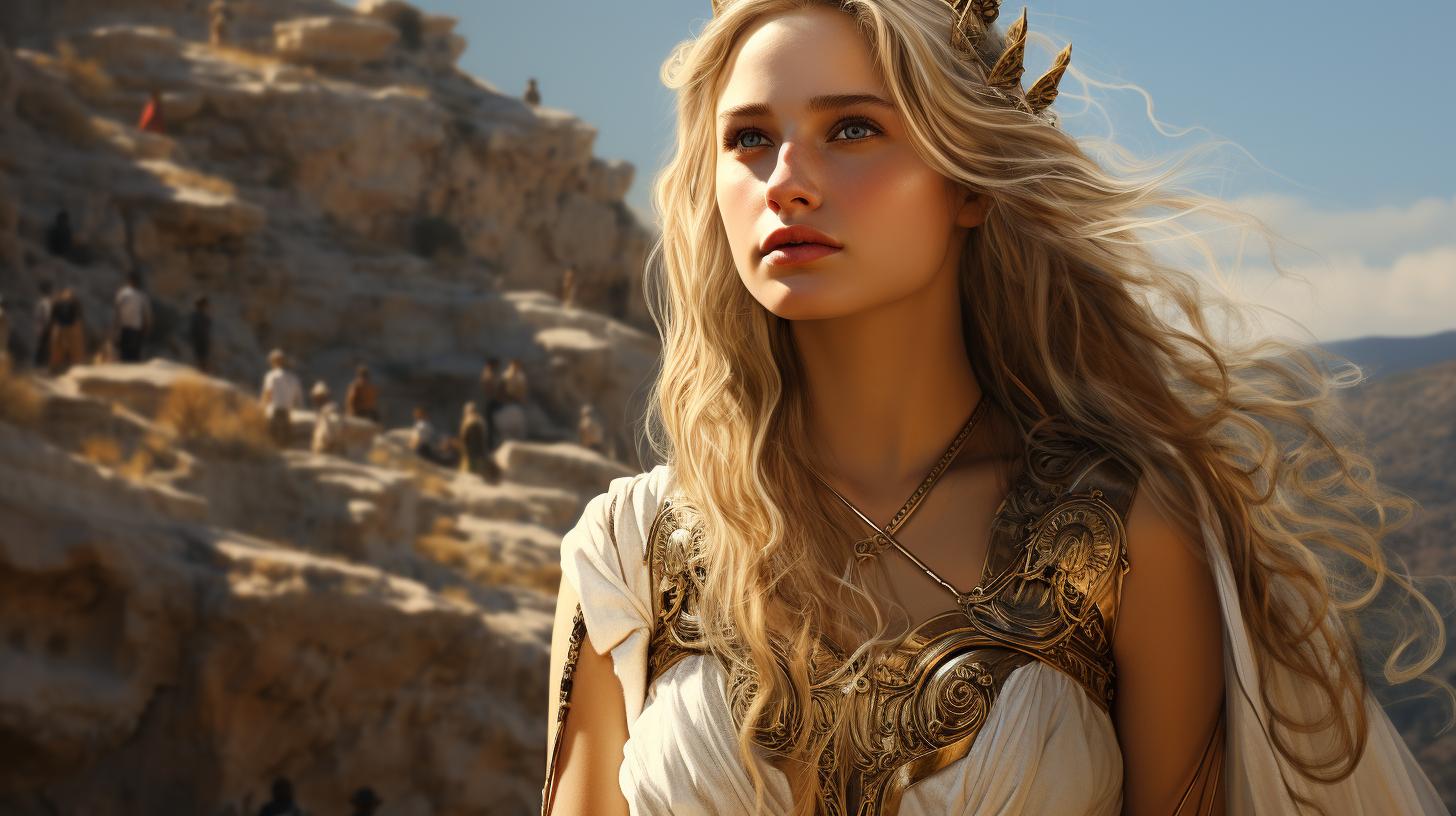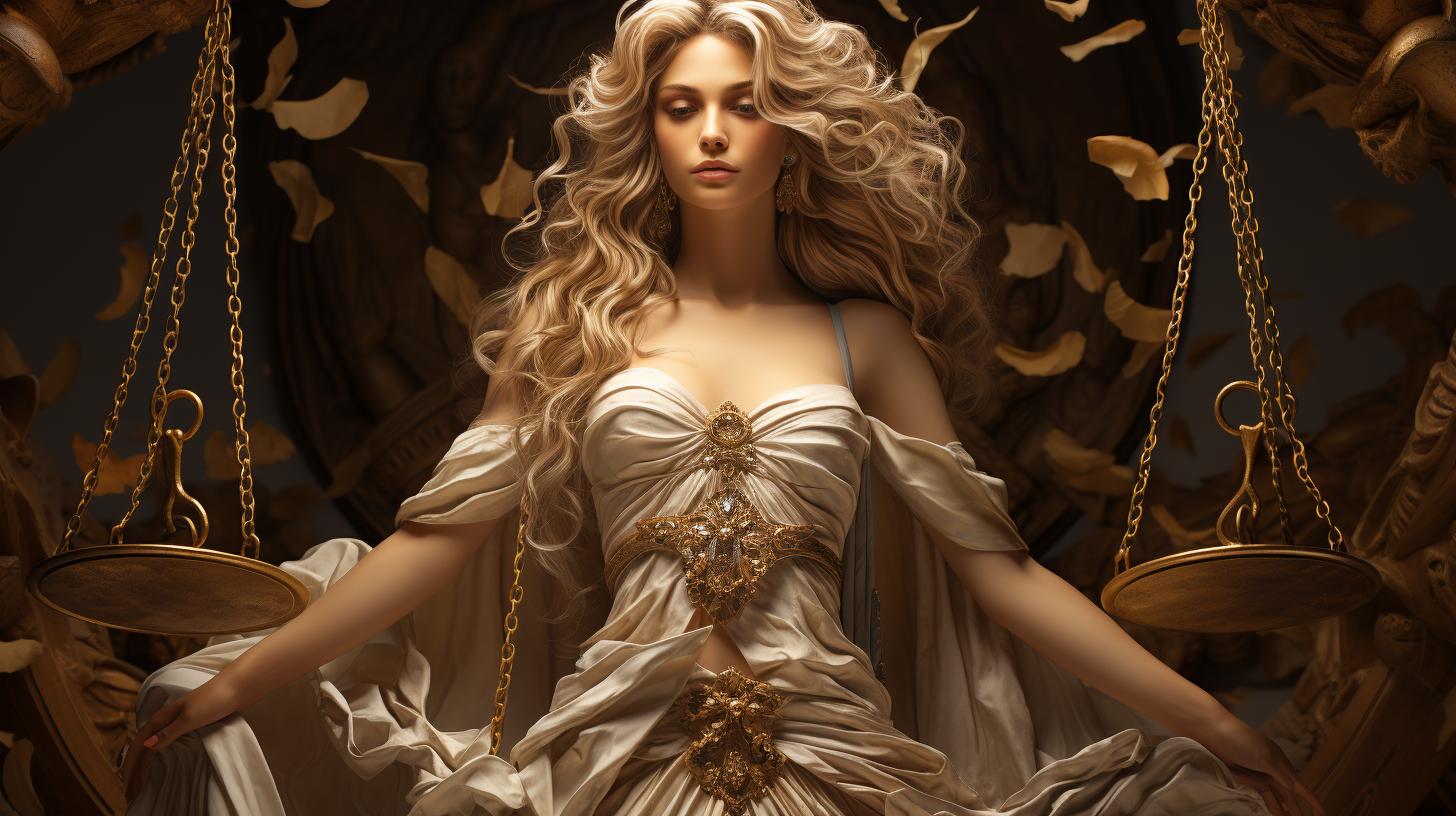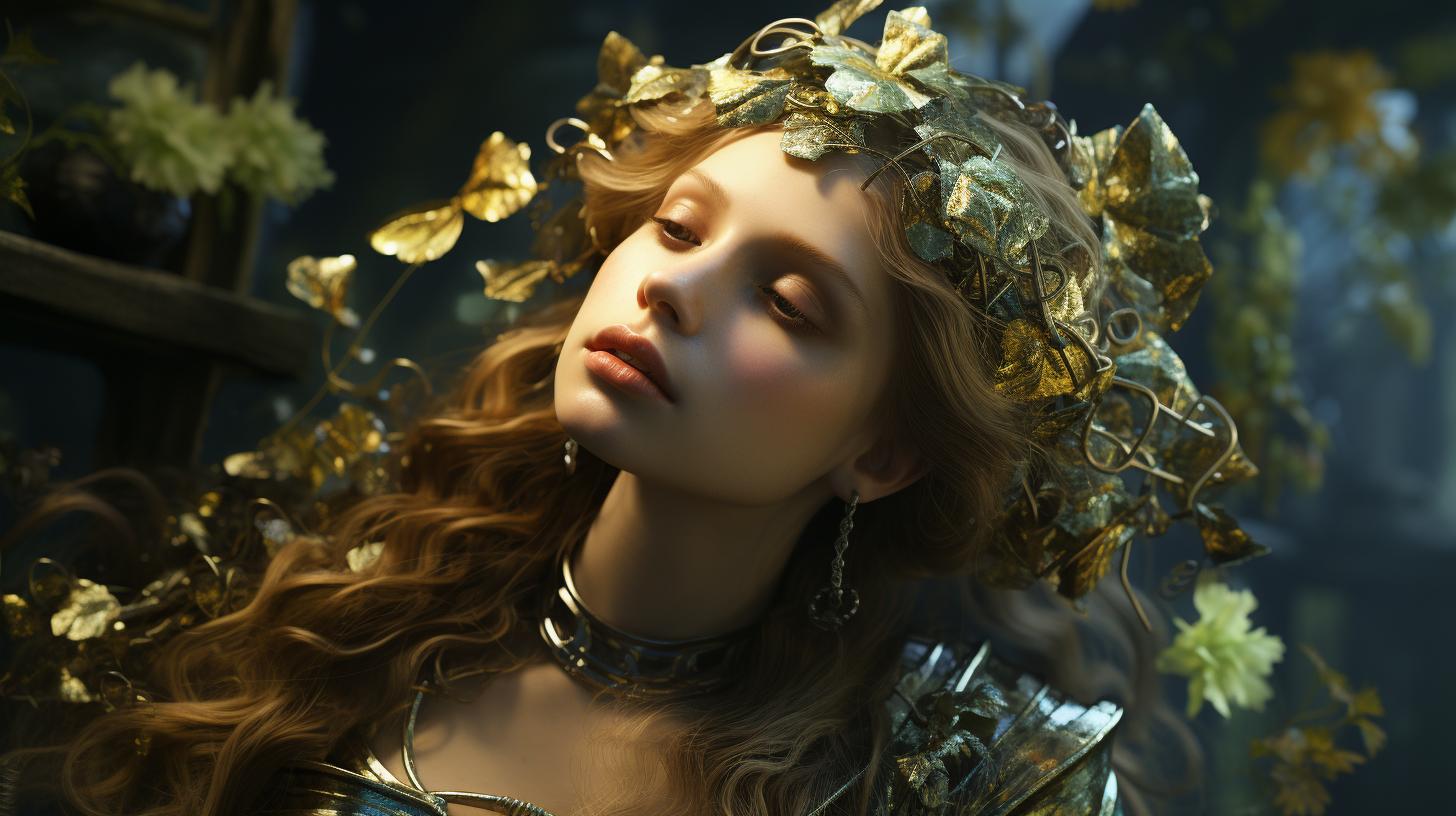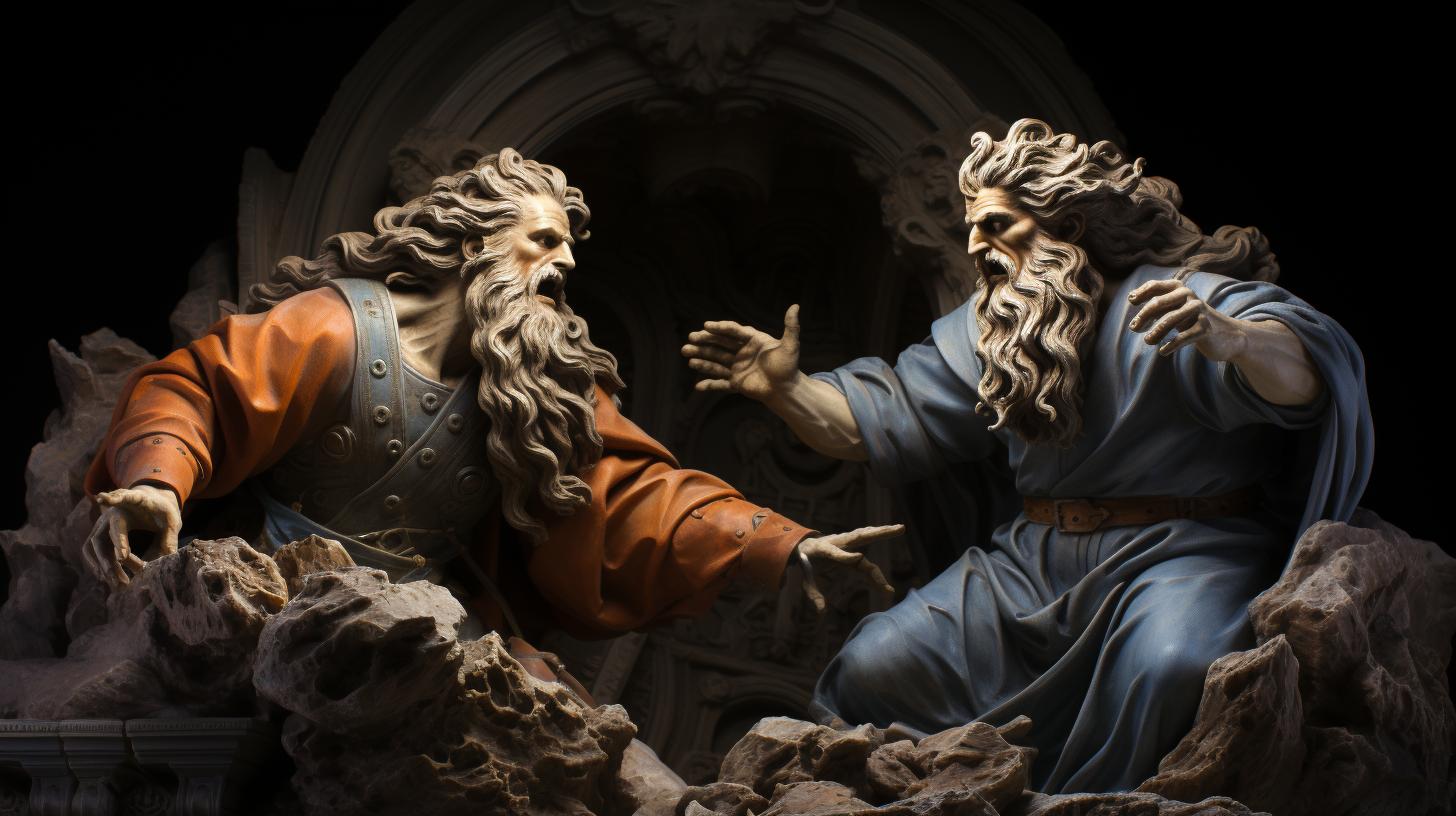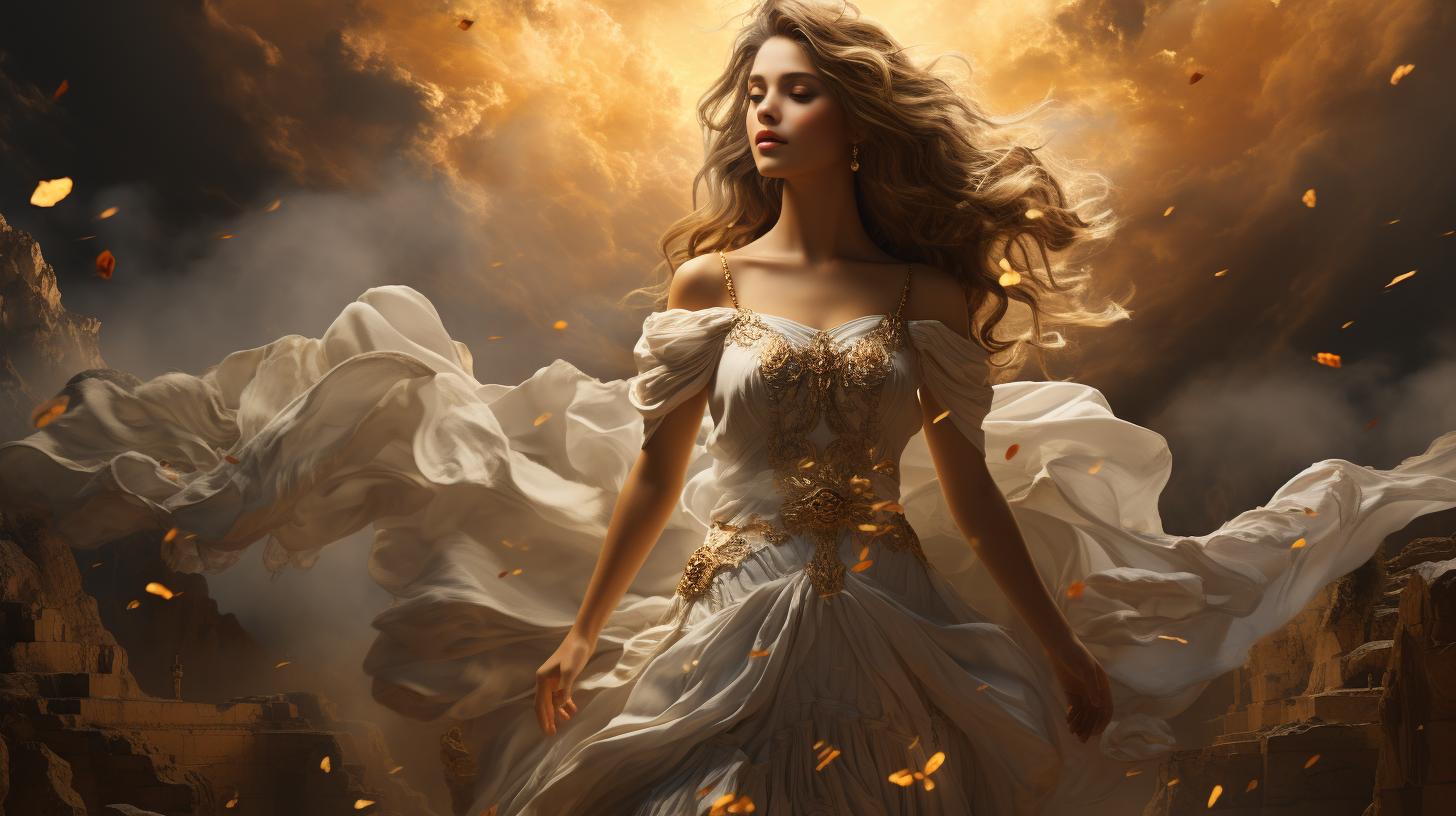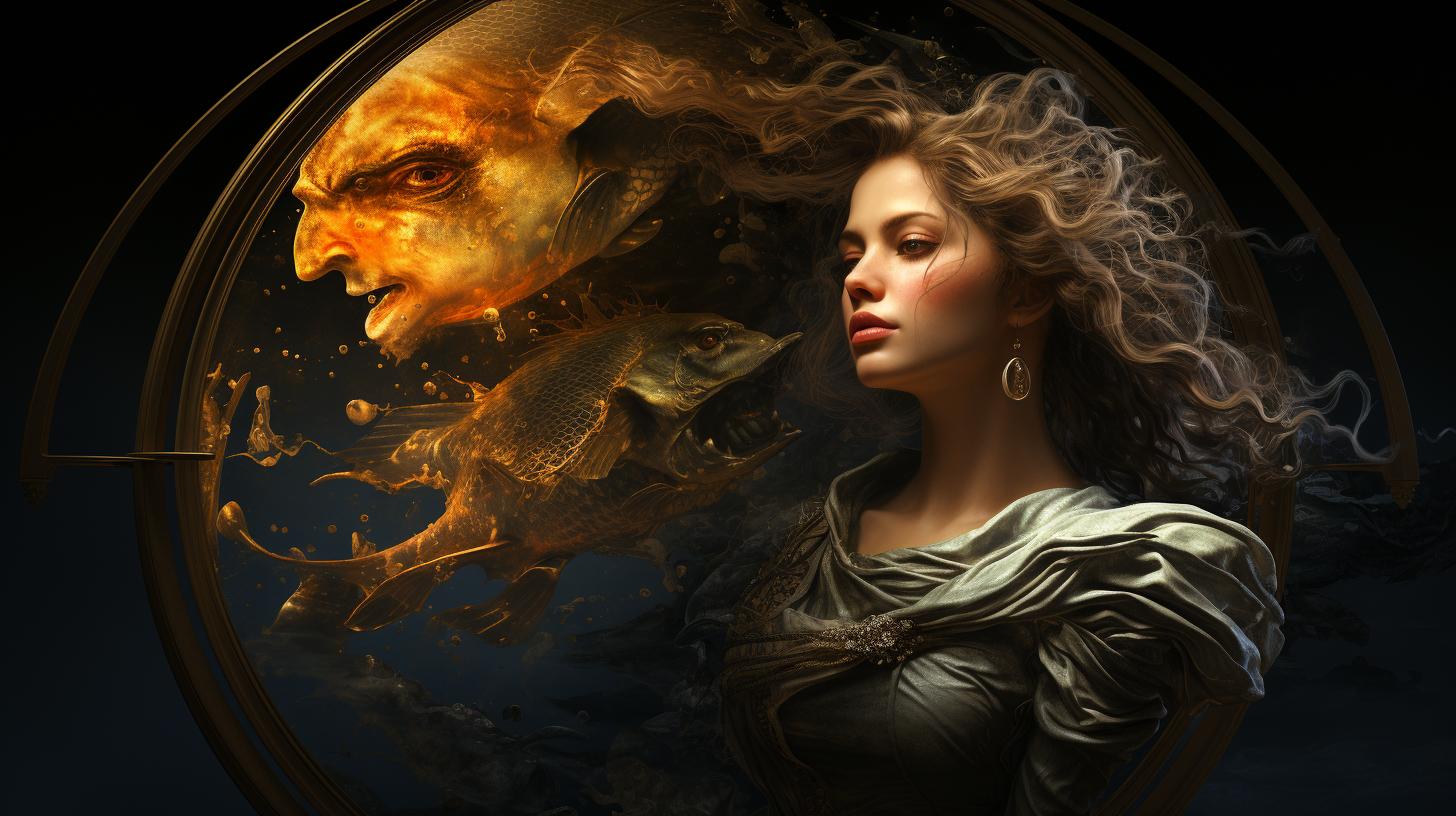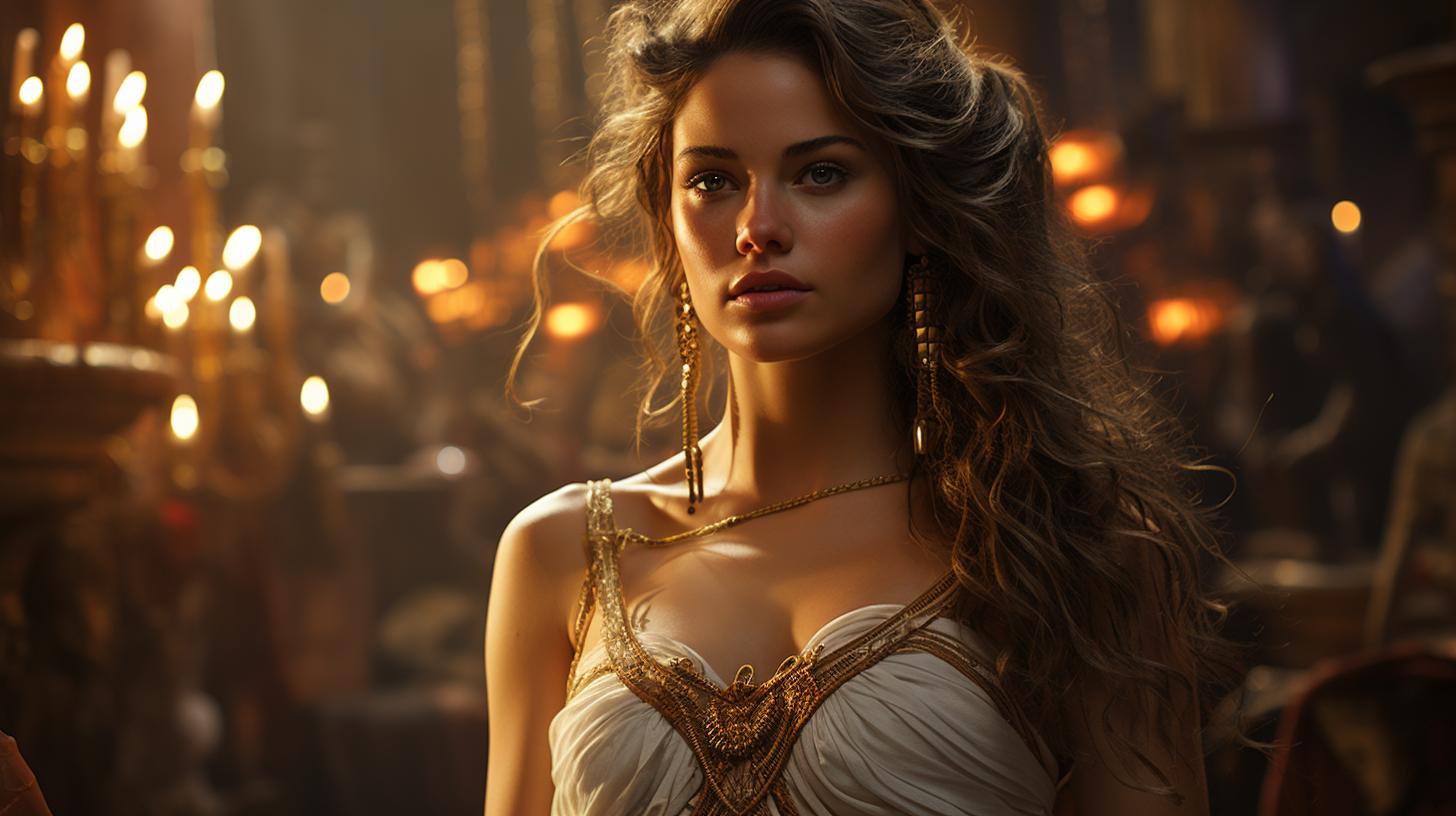Eirene: The Greek Goddess of Peace and Love Explored
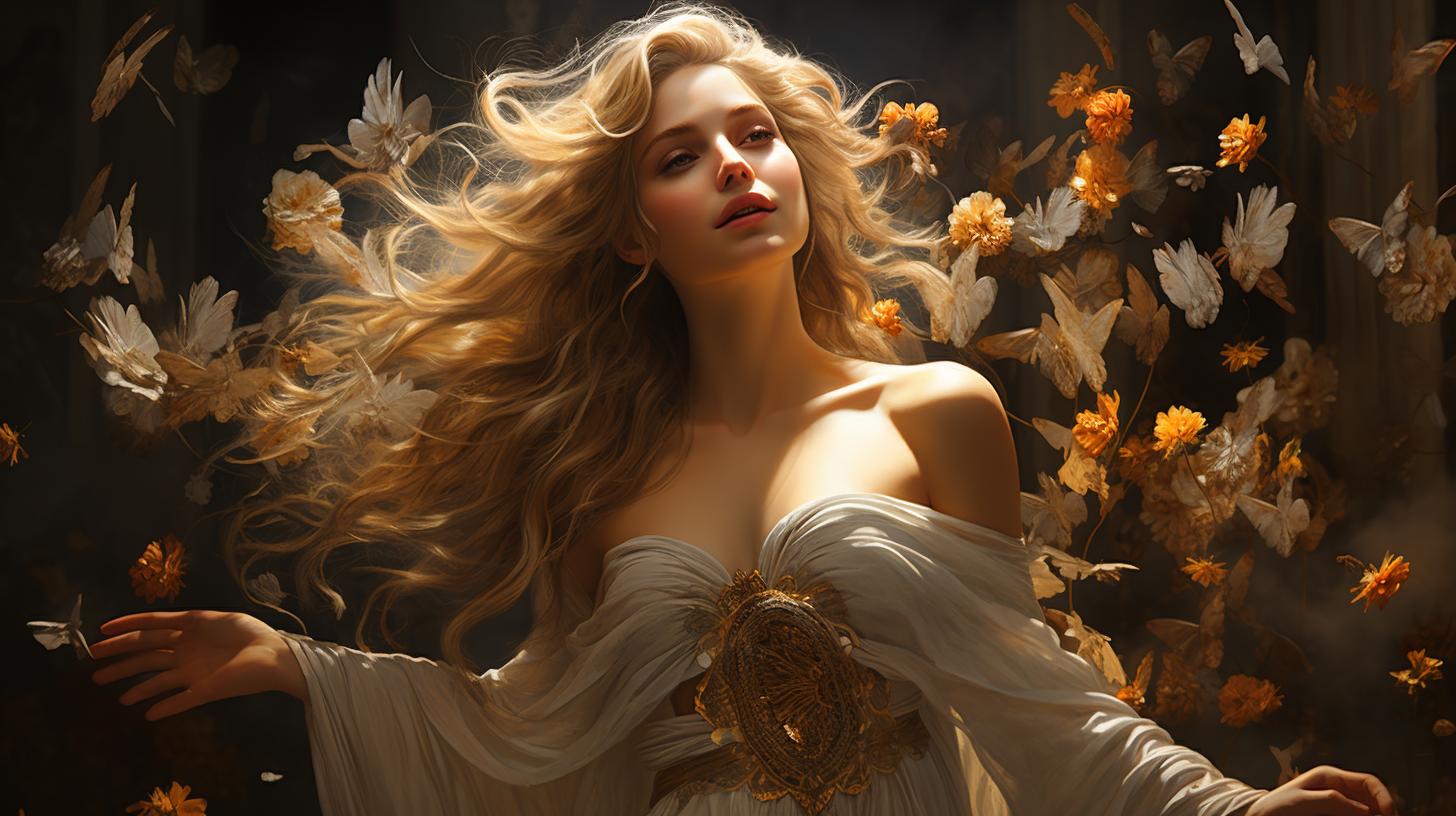
Eirene, the Greek goddess of peace and love, holds a significant role in Greek mythology. As one of the Horai, alongside her sisters Eunomia and Dike, she safeguards the gates of heaven and represents the seasons.
Her name means peace and is closely associated with the ancient Greek word for spring. Known for her mediation and peacemaking abilities, Eirene strives to find balance and resolve conflicts among different groups.
She is revered by the ancient Greeks, honored through altars and sacrifices, and her influence transcends to Babylonian and Egyptian cultures. Eirene’s legacy continues to impact modern interpretations and symbolize peace movements.
Eirene: The Goddess of Peace and Love
Eirene, also known as the Greek goddess of peace and love, holds a significant place in Greek mythology. Her role as a mediator and peacemaker exemplifies her importance in maintaining harmony within the divine realm and among mortals.
Eirene’s Role as a Mediator and Peacemaker
Eirene plays a crucial role in Greek mythology as a skilled mediator and peacemaker. While other deities often find themselves embroiled in conflicts and wars, Eirene seeks to establish equilibrium and resolve disputes among different factions.
Her desire for peace and her ability to bridge gaps between opposing groups make her an indispensable figure in Greek mythology.
Eirene’s Representation and Attributes as a Goddess
Depicted as a maiden bearing the fruits of the seasons, Eirene is the daughter of Zeus and Themis. She often cradles the baby Ploutos, symbolizing wealth and abundance. This association identifies her not only with Demeter and Tyche, goddesses of agricultural prosperity, but also highlights her connection to the concepts of peace, prosperity, and well-being.
- Eirene embodies harmony and serenity, representing the ideal state of peaceful coexistence.
- She is often portrayed wearing a gentle expression, radiating an aura of tranquility.
- Eirene’s nurturing nature and role as a caregiver are reflected in her representation with the infant Ploutos.
Eirene’s attributes as a goddess emphasize her role in fostering peace and her ability to bring about prosperity and abundance through peaceful means.
The Horai: Eirene and Her Sisters
The Horai, including Eirene, hold great significance in Greek mythology. As celestial guardians, they represent the cyclical nature of time and the changing seasons. Each of the Horai sisters plays a unique role in maintaining order and balance in the world.
The Horai and Their Significance in Greek Mythology
The Horai, often referred to as the “Seasons,” embody the continuous cycle of nature, symbolizing the passage of time and the changing of the seasons. They are responsible for maintaining the harmony between the mortal and divine realms.
Eirene, as one of the Horai, personifies peace and represents the arrival of spring. Her presence brings tranquility and abundance, marking the transition from the harshness of winter to the blooming of new life.
The Horai’s significance lies in their role as nurturers and preservers of the natural order.
Eirene’s Relationship with Her Sisters Eunomia and Dike
Eirene shares a deep bond with her other two sisters, Eunomia and Dike. Eunomia, the goddess of law and order, ensures the just governance of mortal affairs, while Dike, the goddess of justice, maintains moral righteousness.
Together, these sisters form a powerful triad representing stability, peace, and moral integrity.
Eirene’s connection with Eunomia and Dike highlights the interconnectedness of peace, law, and justice. They work in unison to promote harmony and social cohesion among gods and mortals alike.
Eirene’s presence softens conflicts and promotes understanding, while her sisters provide the framework for a just society.
- Eirene represents peace and tranquility.
- Eunomia embodies the importance of laws and order.
- Dike ensures justice and moral righteousness.
This harmonious relationship between the sisters showcases the divine attributes necessary for a balanced and thriving society.
In summary, the Horai, including Eirene, hold significant roles in maintaining order and balance in Greek mythology. As gods and goddesses who represent the changing seasons and the cyclical nature of time, they personify peace, law, order, and justice.
Eirene’s close bond with her sisters, Eunomia and Dike, reinforces the interplay between peace, law, and justice in creating a harmonious society.
Eirene and the Seasons: Goddess of Spring
Eirene, the Greek goddess of peace and love, also holds a significant connection to the changing seasons, most notably the enchanting arrival of spring. As a goddess associated with harmony and balance, Eirene’s role in the cycle of nature symbolizes the rejuvenation and renewal that spring brings.
Eirene’s Connection to the Seasons and Springtime
Eirene’s divine presence intertwines with the shifting seasons, particularly during the transition from winter to spring. Her essence embodies the essence of spring, as she ushers in a time of blossoming flowers, longer days, and a gentle warmth that fills the air.
This connection represents the harmonious balance between nature’s cycles and the peaceful prosperity Eirene fosters.
Eirene’s Association with Fertility and Agriculture
Beyond her association with the seasons, Eirene’s significance extends to fertility and agriculture, elements crucial to sustenance and life. The abundance and flourishing of crops during springtime are attributed to her nurturing and benevolent nature.
Farmers and agrarian societies recognized her as a patroness, seeking her blessings for bountiful harvests and the fruitful growth of their lands.
- She is revered as the protector of crops and the source of prosperity in agricultural communities.
- Her presence is felt in the fertility of the soil, ensuring abundant yields and sustenance for all.
- Eirene’s association with agriculture further emphasizes her role as a deity of peace and harmony, as the success of agricultural endeavors often facilitates societal stability and well-being.
Eirene in Worship and Art
Eirene, the Greek goddess of peace and love, holds a significant place of reverence in worship and artistic representations.
Her devotees expressed their devotion through the construction of altars and the dedication of offerings in her honor.
Altars and Offerings Dedicated to Eirene
Throughout ancient Greece, altars dedicated to Eirene were erected as symbols of veneration and gratitude. These altars served as sacred spaces where worshippers could pay homage and seek the goddess’s blessings.
Offerings made to Eirene were diverse and often included symbolic items representing peace, such as olive branches or white flowers. These offerings were carefully presented on the altars as expressions of gratitude and the desire for peace in personal and societal realms.
Notable Artworks Depicting Eirene
Eirene’s influential presence is also seen in various artistic representations. One notable artwork is the statue of Eirene located in the Agora of Athens. Created by Cephisodotus the Elder, this masterpiece depicts Eirene holding the infant Plutus in her left arm, symbolizing prosperity under the care of peace.
Another renowned artwork is the Roman marble copy of the statue, which stands as one of the best-preserved pieces of ancient Greek art. This masterpiece, now housed in the Glyptothek Museum in Munich, captures the grace and serenity of Eirene, resonating with her role as the goddess of peace.
Various other sculptures and paintings have immortalized Eirene’s representation, highlighting her importance in the ancient Greek artistic tradition.
Through altars and artistic creations, the ancient Greeks demonstrated their deep admiration for Eirene and their yearning for peace, emphasizing the profound impact she had on their religious and cultural practices.
Eirene’s Influence Beyond Greek Mythology
Eirene, the Greek goddess of peace and love, extends her influence beyond the realm of Greek mythology. She finds mention and connections in Babylonian and Egyptian cultures, showcasing her universal significance in the pursuit of peace and harmony.
Eirene in Babylonian and Egyptian Cultures
In Babylonian culture, Eirene finds similarities with the goddess Inanna, also known as Ishtar. Both goddesses are associated with fertility and the arrival of spring, representing the rejuvenation and abundance that follow the peaceful resolution of conflicts.
Similarly, in Egyptian mythology, Eirene’s influence is linked to the goddess Inanna or Ishtar, who is revered as the epitome of love and war. This connection highlights Eirene’s multifaceted nature and her ability to reconcile opposing forces, emphasizing the importance of unity and peace in Egyptian culture as well.
Connections between Eirene and Other Deities
It is fascinating to explore the connections between Eirene and other deities across various mythologies. In the Greco-Roman pantheon, Eirene is often associated with Demeter and Tyche, goddesses of agricultural abundance and fortune.
This connection symbolizes the intertwining of peace, prosperity, and the bountiful blessings of nature.
Eirene’s role as a mediator and peacemaker also draws parallels to other deities in different mythologies. For instance, in Norse mythology, Frigg, the goddess of marriage and motherhood, displays similar qualities as she seeks to maintain harmony and resolve disputes between warring factions.
Summary
Eirene’s influence goes beyond the boundaries of Greek mythology, leaving a lasting impact on cultures such as Babylonian and Egyptian. Her connection with goddesses in other mythologies showcases the universality of her role as a symbol of peace, harmony, and reconciliation.
Through these diverse associations, Eirene’s legacy continues to inspire a quest for tranquility, not only in ancient times but also in modern society.
Eirene’s Legacy and Modern Interpretations
As the Greek goddess of peace and love, Eirene’s legacy continues to resonate in contemporary society. Her symbolism in peace movements highlights her enduring relevance and the values she represents.
The Symbolism of Eirene in Peace Movements
Eirene’s role as a peacemaker and mediator has made her an icon for those working towards global harmony.
Her image is often invoked as a symbol of peaceful resolutions, non-violence, and cooperation. In various demonstrations, rallies, and protests worldwide, activists often carry images or statues of Eirene to convey their commitment to peace.
Eirene’s symbolism is especially significant in conflict zones and war-torn regions. People look to her as a beacon of hope, reminding them of the possibility of reconciliation and the power of diplomacy.
Her representation in peace movements provides solace and inspiration to those affected by violence, encouraging them to pursue peaceful solutions.
Furthermore, Eirene’s portrayal as a maternal figure, carrying the baby Ploutos, symbolizes not only the nurturing aspects of peace but also the importance of safeguarding future generations.
This imagery reinforces the idea that a peaceful world is one that ensures the well-being and prosperity of all its inhabitants, present and future.
Eirene’s Relevance in Contemporary Society
Despite originating from ancient Greek mythology, Eirene’s relevance extends beyond cultural and historical boundaries. Her principles of peace, harmony, and mediation continue to inspire individuals and organizations in various fields, including politics, diplomacy, and conflict resolution.
In diplomatic efforts, Eirene’s archetype serves as a reminder of the importance of dialogue, negotiation, and understanding in resolving international disputes. Her example encourages world leaders to prioritize peaceful resolutions and seek common ground for the betterment of society.
Within interpersonal relationships, Eirene’s teachings promote compassion, empathy, and reconciliation. Her emphasis on finding balance and equilibrium resonates in modern approaches to conflict resolution, encouraging individuals to seek mutually beneficial solutions and foster understanding between opposing parties.
Eirene’s universal appeal is also evident in the arts and popular culture. Her image is frequently incorporated into various forms of artistic expression, including paintings, sculptures, and literature. In this way, she continues to inspire artists, writers, and performers to explore themes of peace, love, and harmonious coexistence.
In conclusion, Eirene’s legacy as the Greek goddess of peace and love transcends time and cultural boundaries. Her symbolism in peace movements and relevance in contemporary society highlight the enduring significance of her principles and teachings.
By embodying the ideals of peace and mediation, Eirene continues to inspire individuals, communities, and nations to strive for a more peaceful and harmonious world.
.

